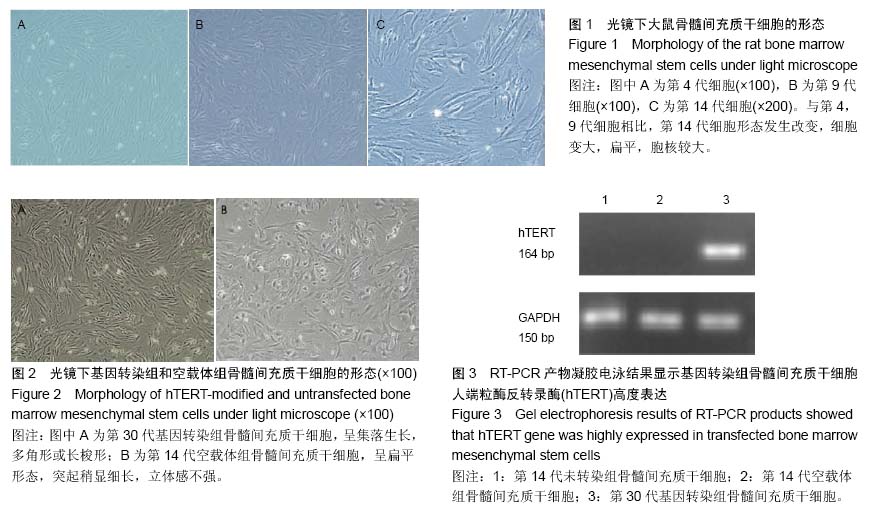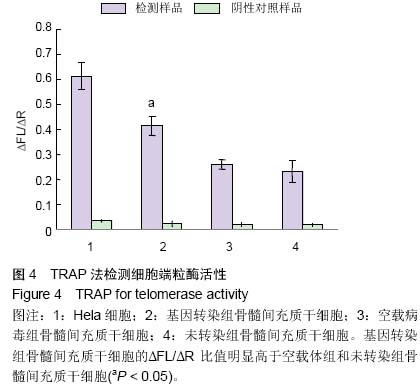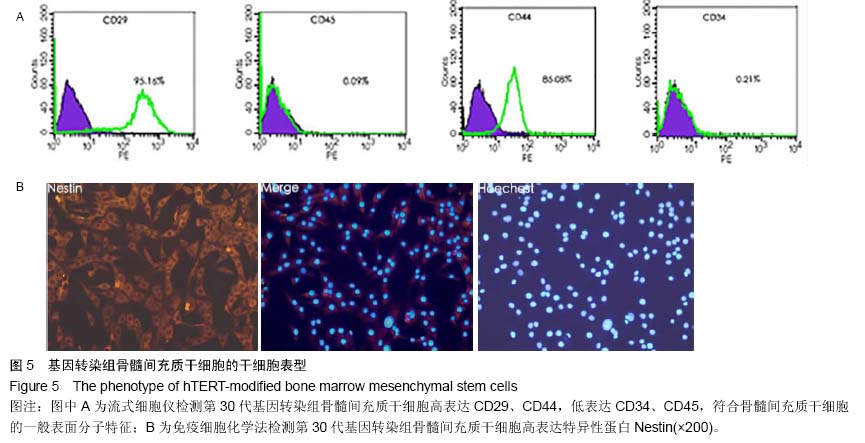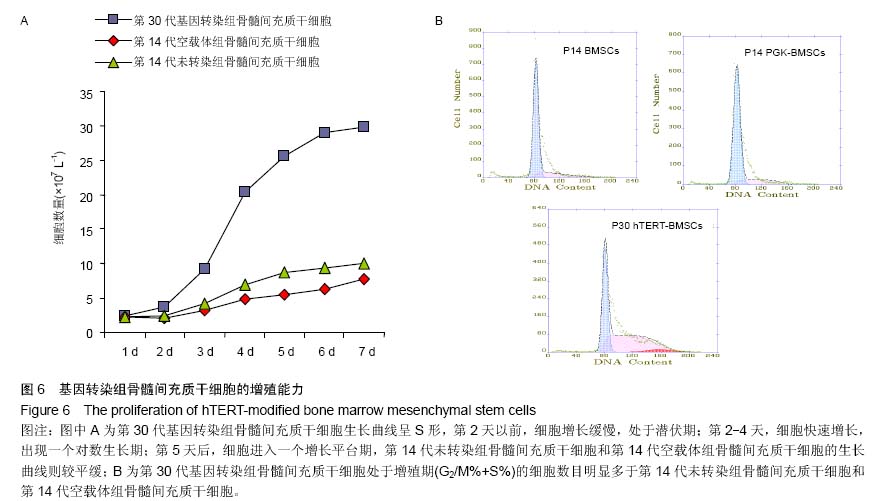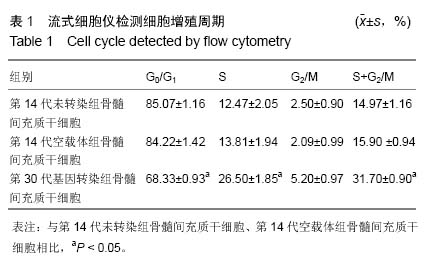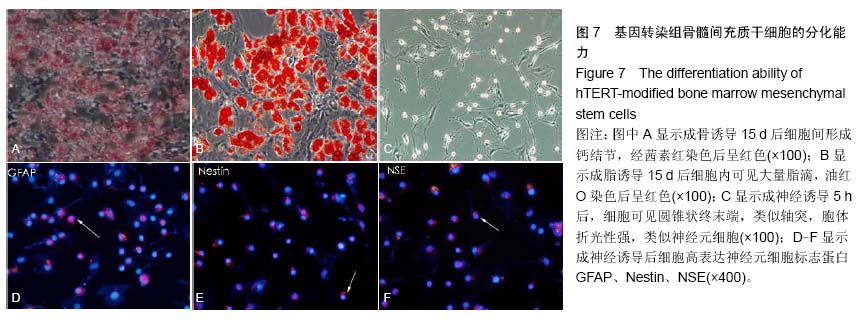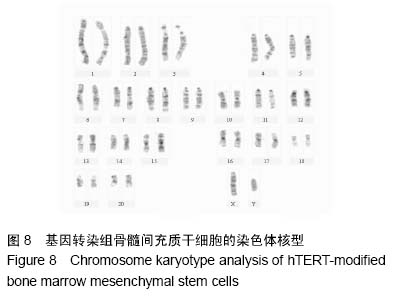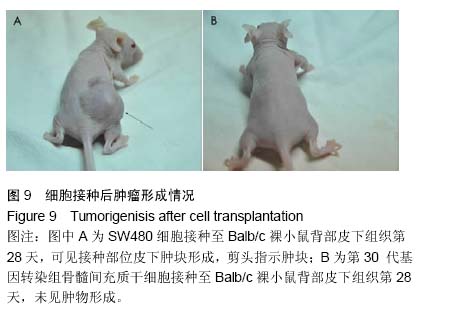中国组织工程研究 ›› 2015, Vol. 19 ›› Issue (23): 3621-3627.doi: 10.3969/j.issn.2095-4344.2015.23.003
• 骨髓干细胞 bone marrow stem cells • 上一篇 下一篇
构建人端粒酶反转录酶修饰的永生化大鼠骨髓间充质干细胞株
刘慧萍,钟晓龙,赵 晴,黄文起,安 珂
- 中山大学附属第一医院麻醉科,广东省广州市 510080
Construction of human telomerase reverse transcriptase-immortalized rat bone marrow mesenchemal stem cell strains
Liu Hui-ping, Zhong Xiao-long, Zhao Qing, Huang Wen-qi, An Ke
- Department of Anesthesiology, the First Affiliated Hospital of Sun Yat-sen University, Guangzhou 510080, Guangdong Province, China
摘要:
背景:骨髓间充质干细胞具有取材方便、多向分化及低免疫原性等优点,是转基因细胞移植镇痛领域中的理想载体细胞,但由于骨髓中间充质干细胞含量有限、体外培养的复制性衰老等问题,制约其在镇痛研究中的应用。 目的:构建永生化大鼠骨髓间充质干细胞株,为转基因细胞移植镇痛提供载体细胞来源。 方法:构建携带人端粒酶反转录酶基因的慢病毒pLV-Puro-EF1α-hTERT并转染第3代骨髓间充质干细胞后进行嘌呤霉素筛选,获得阳性细胞克隆并扩大培养,分别采用RT-PCR和TRAP法检测转染细胞人端粒酶反转录酶的表达和端粒酶活性,同时观察细胞形态、增殖和诱导分化能力、表面分子以及Nestin、MHC-Ⅰ和MHC-Ⅱ的表达,检测细胞染色体核型和致瘤性。 结果与结论:人端粒酶反转录酶基因修饰的骨髓间充质干细胞可以体外连续培养超过30代。与未转染的细胞和对照病毒转染的细胞相比,慢病毒转染的骨髓间充质干细胞人端粒酶反转录酶mRNA表达、端粒酶活性以及细胞增殖能力均提高,细胞周期主要处于G2/M以及S期,增殖指数明显升高;细胞表面分子CD29、CD44、CD90表达阳性率大于70%,而CD34、CD45表达阳性率不足5%,胞浆Nestin的表达阳性,而MHC-Ⅰ和MHC-Ⅱ未见表达,保留了干细胞成骨、成脂、成神经的分化能力,细胞形态、染色体核型均正常,裸鼠接种无致瘤性。以上结果提示成功构建了人端粒酶反转录酶基因修饰的永生化大鼠骨髓间充质干细胞株,为转基因细胞移植用于镇痛研究提供了生物学性状均一、稳定的安全载体细胞。 中国组织工程研究杂志出版内容重点:干细胞;骨髓干细胞;造血干细胞;脂肪干细胞;肿瘤干细胞;胚胎干细胞;脐带脐血干细胞;干细胞诱导;干细胞分化;组织工程
中图分类号:
